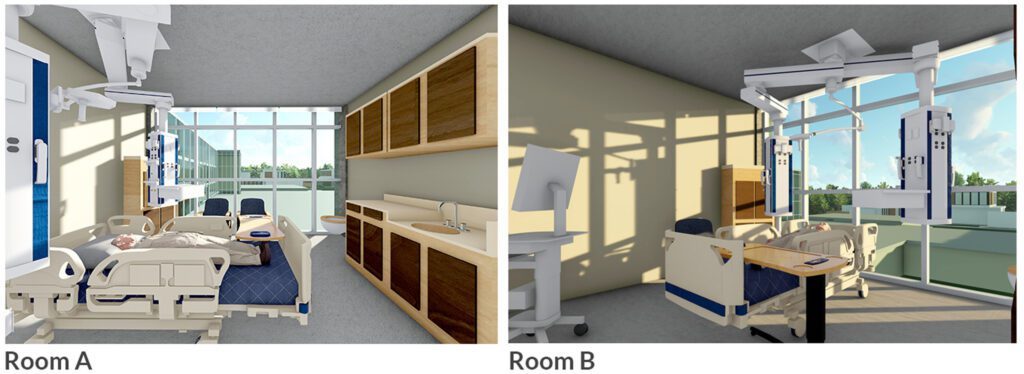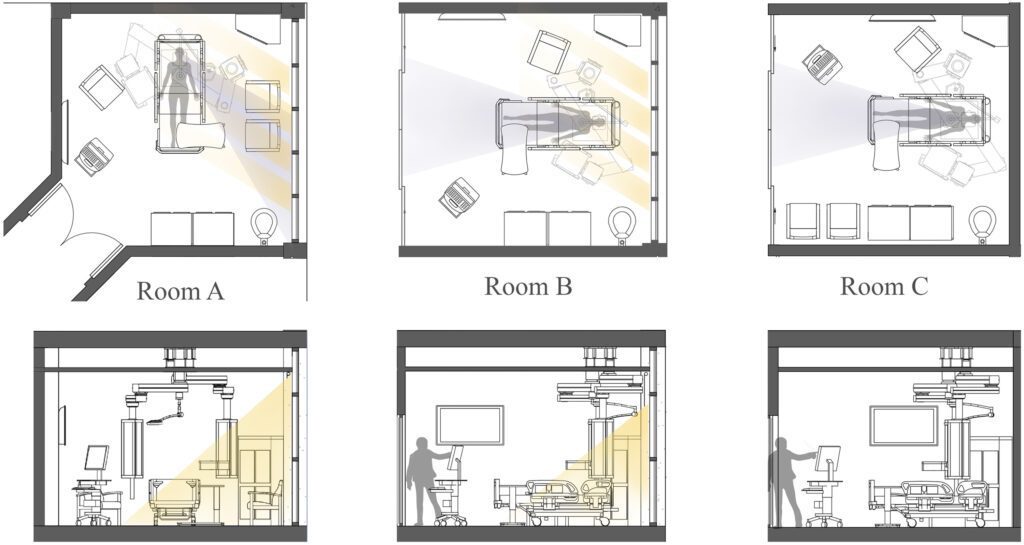Healthcare / Research
CICU patients benefit from access to daylight and window views, study finds
By Bill Bates | 06 Feb 2023 | 0
Hospital room design, access to daylight, and window views of nature can reduce the length of hospital stays among patients with heart disease, a new study has found.
The study found that access to daylight and window views can reduce the stay of a patient in the cardiac intensive-care unit (CICU) by 16.8 hours, and, in some cases, reduce the stay by roughly one day.
According to one of the researchers, previous studies have examined how views of nature and daylight can positively impact patient recovery. The latest research delves into the interplay between such factors and the length of stay in the CICU environment. Additionally, earlier studies didn’t measure the amount of daylight and were unable to tease out whether daylight or nature views had a greater impact on a patient’s recovery.
The research was carried out by Roxana Jafarifiroozabadi, a former doctoral student of the planning, design and the built environment programme, at Clemson School of Architecture; faculty member Professor Anjali Joseph, director of the Center for Health Design and Testing; and Andrea Franks, nurse manager for the clinical and nursing research department at AnMed Health.

The decision to carry out the study was sparked when Jafarifiroozabadi learned that nurses in a medical centre in South Carolina noticed differences in the health outcomes of patients in different rooms of the CICU. Nurses suspected that patients recovered fastest in rooms with daylight and window views, but they couldn’t quantify or explain the differences in outcomes.
The specific layout of the medical centre, combined with rigorous criteria for patients to be a part of the study, led Jafarifiroozabadi and Joseph to study the direct effects of different daylight levels, window views, and patient bed orientation towards the windows on 2319 patients with heart disease.
Prof Joseph said: “The study is unique in that we have some patients whose beds are oriented so that they can look outside the window; some whose beds are oriented where the window is behind them so they can experience the daylight, but they can’t really see the view; and some patients who have neither window views nor daylight.”
Among the patients assigned to CICU rooms, 12 per cent were hospitalised in type A rooms, where the patient bed is parallel to the window with access to daylight and window views. Some 42 per cent of patients were hospitalised in type B rooms, where the head of the patient bed is against the window with access to daylight but no access to window views; and 46 per cent of patients were hospitalised in type C rooms, which did not have a window.

The study found that the average CICU length of stay for patients in type A rooms was 2.8 days; 3.1 days in type B rooms; and 3.5 days in type C rooms. On average, patients in type A rooms stayed 19.2 hours and 12 hours less in the CICU than those in type C and B rooms.
“In a healthcare context, even a few hours less time in a patient’s length of stay means a lot of cost savings for the hospital in terms of hospitalisation and medication,” explained Jafarifiroozabadi. “Also, from the patient’s point of view, an additional length of stay in hospitals can increase risks of hospital-acquired infections, which is why hospitals are trying to decrease the length of a patient’s stay.”
How windows are used to benefit occupants
The researchers also compared type A rooms, with access to daylight and window views, to type B rooms, with access to daylight but without window views. They found that the availability of window views, in addition to daylight, significantly reduced the CICU length of stay among patients with symptoms of dementia, a history of obesity, and those receiving palliative care.
“When we’re designing rooms with windows, what really matters is how we’re using that window to make the most impact on the occupant,” said Jafarifiroozabadi. “When we’re talking about patients who are unable to adjust the blinds or adjust the amount of daylight coming in, it’s really up to the caregivers and hospital to optimise that environment for the patients.”
The researchers believe that their findings can help hospital stakeholders, architects, and medical planners determine room layouts that are conducive to patient recovery and maximise the efficiency of windows in CICUs.
While there are limitations to the research, Jafarifiroozabadi and Joseph recommend that future research investigates two different variables: first, the impact of daylight and window views on heart disease patients who have undergone surgery; and second, the effect of lighting colour, different views (nature versus urban), and differences in the duration and time of direct daylight exposure on CICU patients.
The full paper, ‘The impact of daylight and window views on length of stay among patients with heart disease: A retrospective study in a cardiac intensive care unit’, was published in The Journal of Intensive Medicine.
This article is a slightly adapted version of an original piece authored by Bill Bates for Clemson News.
Organisations involved
